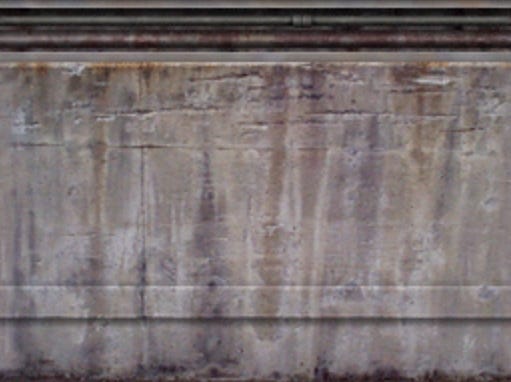Products You May Like
Half-Life turns 25 years old tomorrow, with new maps and updates to celebrate. Valve also reunited the game’s original developers for an hour-long making-of documentary in which its original programmers and artists reminisce about creating the first-person classic at a time when many of them had never shipped a game before.
Chief among the revelations within is that all of Half-Life’s textures were created by a single person, Karen Laur.
Here’s the documentary, produced in partnership with Danny O’Dwyer’s Secret Tape:
Of course, ’90s games were made by much smaller teams than those that build video games today, even first-person shooters. Yet Valve had several programmers, several level designers, several character artists. I therefore assumed that its textures would likewise have been created by multiple different artists. Not so.
One thing the documentary makes clear is that Valve didn’t have a cohesive plan for what Half-Life should be – including where its levels should take place. Different people on the team initially worked independently, and later started-over to try to turn it into something cohesive. As a result, Laur as texture artist had a lot of influence over what Black Mesa became.
“First of all I had a bunch of textures, and then everytime I made new ones, whoever was working on the new levels would be like, ‘Oh fresh textures, I’m gonna use those!’,” says Laur. “Somebody making another level would start using them [as well] and I was like no, this is chaos, we need to restrict this, so I started naming the texture sets by the level that they were made for. I was trying to enforce some visual cohesion, and that really ended up working.”
“I grew up just out D.C., and so there’s all these big, really banal office buildings, and that’s kind of the direction I went,” says Laur. “It started becoming a facility. So I started making these linoleum tiles, the drop ceiling, the concrete block wall, the black and white tile floor.”
“It’s just an overwhelming amount of work”, says Marc Laidlaw, Half-Life’s writer, of Laur’s solo efforts.
Part of my assumption that the textures were created by a group was driven by how varied Half-Life’s textures are, and how essential. When I first played Half-Life as a 14-year-old, the Black Mesa Research Facility felt like a real place to me in a way that other games with realistic settings from the era, such as Sin and Kingpin: Life Of Crime, never did. The geometry of the underlying architecture mostly consisted of low-poly boxes by technological necessity, but textures made each area seem entirely distinct.
“Originally I was hand-painting all of the textures, and you can really see a shift in some of them where they go from hand-painted to photo reference,” says Laur. “The photo references are much much better. So I was all over Seattle – Harbor Island, Gasworks park – getting rusty metal things. What can I get good pictures of that is vaguely industrial and interesting to look at and then how can we use this?”
I also think the textures deserve a lot of credit for the mapping and modding scene that grew around Half-Life in the years after its release. Using the textures for Quake or its sequel, all you could ever really create was more Quake. Half-Life’s real world textures were malleable enough that you could apply them a little differently, maybe add just a few of your own, and suddenly have a setting entirely separate from Black Mesa. That’s how you get from Half-Life’s singleplayer levels to early Counter-Strike maps like Assault, Siege, and Prodigy, all of which relied on Half-Life’s textures.
The textures aren’t the only part of Half-Life created by a single person. All of the sounds and music were created alone by Kelly Bailey, who also worked on level design. Half-Life’s sound effects have become at least as iconic as its textures, and many have survived unchanged into sequels and other Source engine games. I admit that my love of its textures runs deeper, though. I spent many years as a teenager tinkering in the level editor Worldcraft and became intimately familiar with Half-Life’s texture WADs as a result. Several decades from now, when I’m found dead, the old photo clutched in my hand won’t be of a lost teenage love, it’ll be a printout of C3A1_W5D.

Aside from discussing her work as a texture artist, Laur does also touch on another subject near the end of the documentary. “I was employee seventeen. There was a woman that was kind of the office manager, and eventually Lisa Guthrie came in at the desk. I was the only woman on the team,” says Laur, before sighing. “That was not awesome.”
Unfortunately Laur doesn’t get a chance to elaborate, but the documentary is worth watching throughout. I have hoovered-up dozens, probably hundreds of interviews about the making of Half-Life over the years, as well as listening to developer commentary and reading Raising The Bar and so on. I was therefore already familiar with much of the story the documentary has to tell, but it was still nice to see its developers reminisce all these years later.
